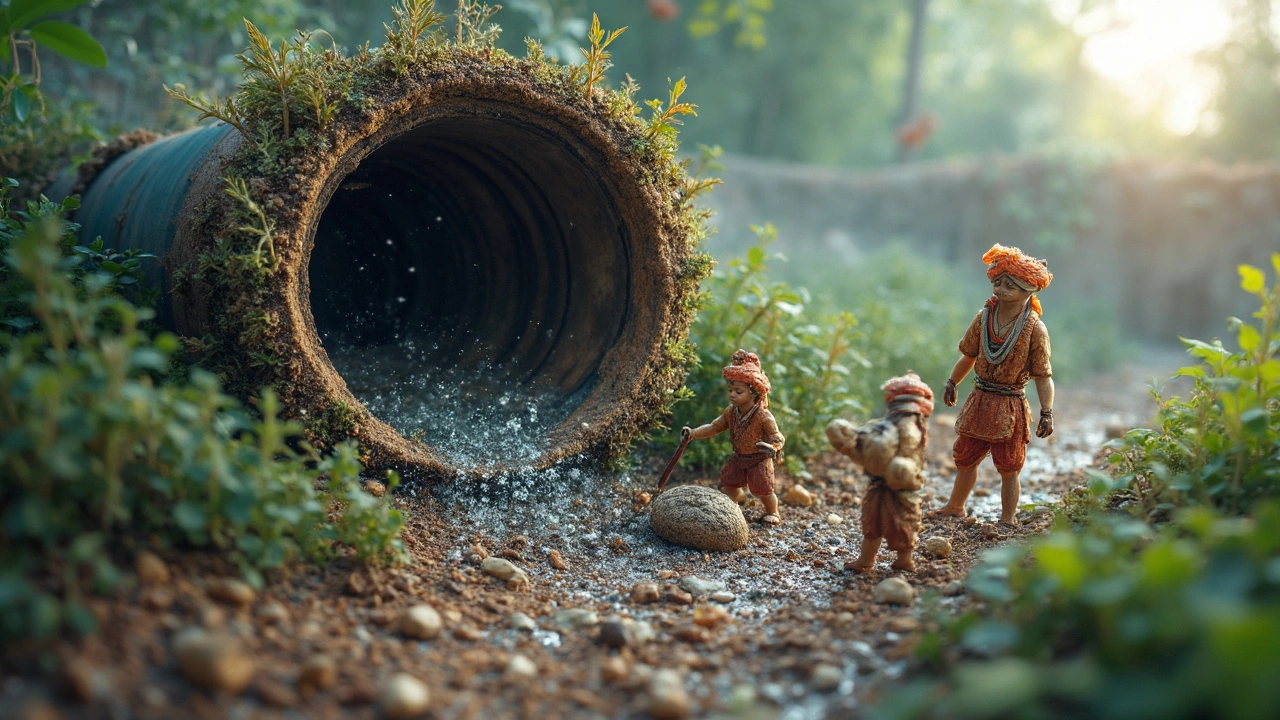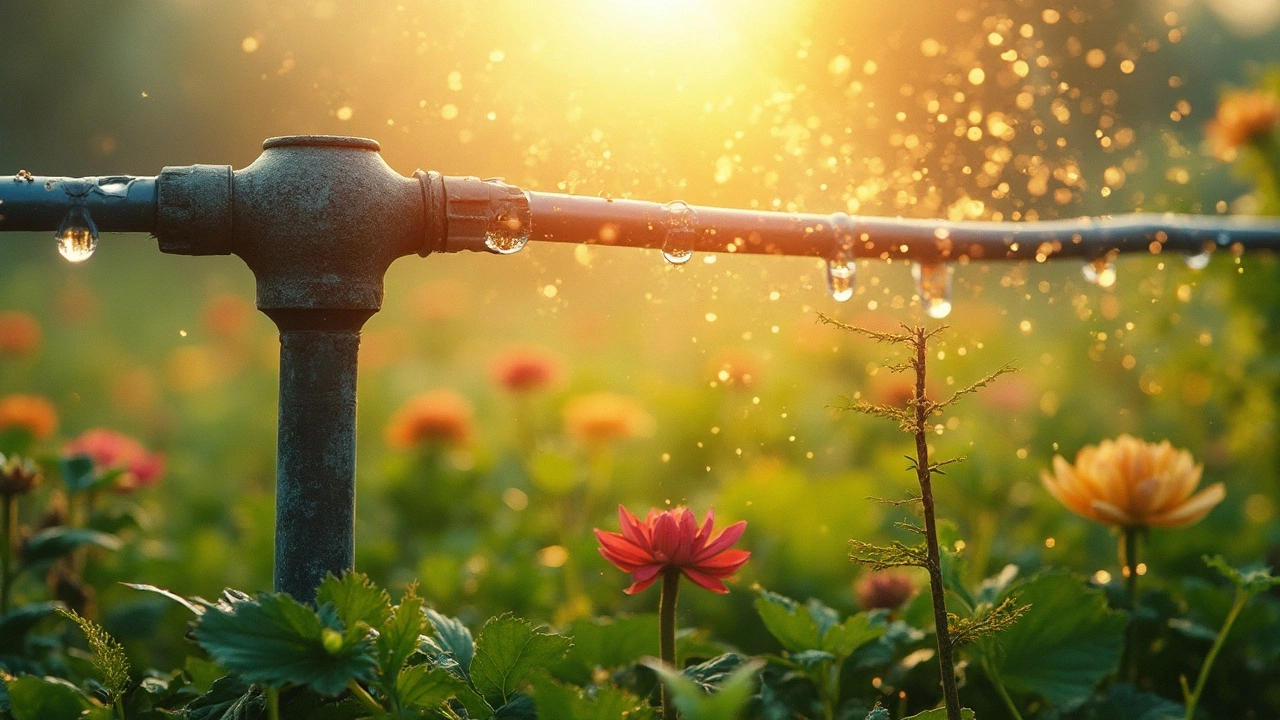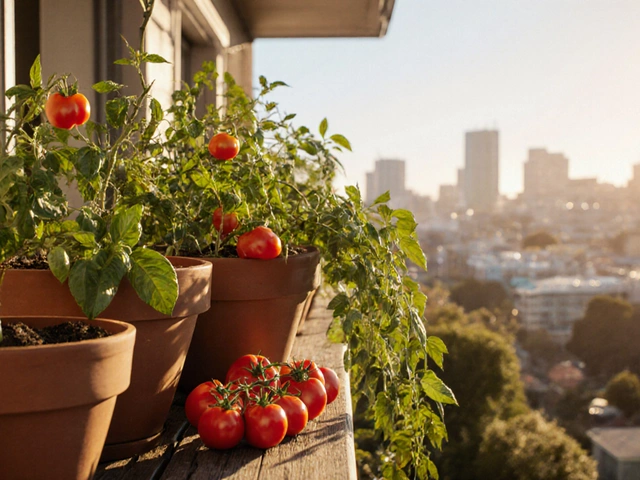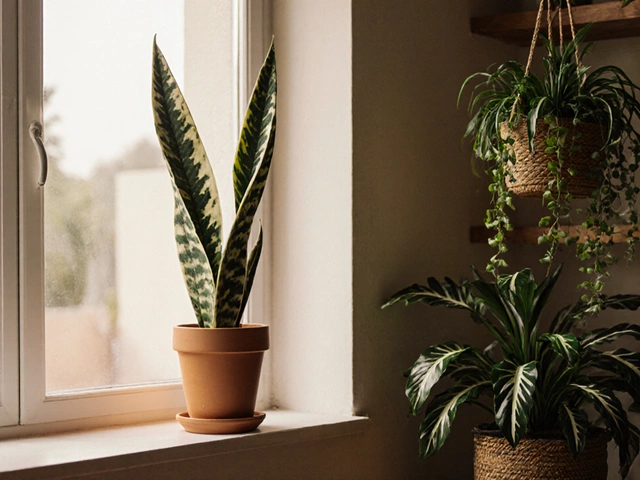Ever notice your drip irrigation system isn't quite working like it used to? That could be because your drip lines are clogging up. It's a common headache for many gardeners. But don't worry, sorting it out is easier than you think.
First, let's chat about why those lines get clogged. Often, tiny debris, mineral buildup, or poor filtration are the culprits. When water carries in these unwanted guests, your plants might end up thirsty and disappointed.
One straightforward trick to keep things flowing is regular maintenance. Flushing your drip lines from time to time can make a huge difference, flushing out the unwanted gunk. Trust me, a little attention here will save you loads of hassle later.
Also, consider installing a good filter. This simple tool can be the knight in shining armor for your irrigation set-up. Stopping the troublemakers before they wreak havoc is always a good move.
Stick with me, and we'll dive deeper into these tips and more, equipping you with the know-how to keep your garden flourishing without a hitch!
- Understanding the Basics of Drip Irrigation
- Common Causes of Drip Line Clogging
- Practical Tips to Prevent Clogging
- Cleaning and Maintenance Strategies
- Innovative Solutions and Tools
Understanding the Basics of Drip Irrigation
Drip irrigation sounds fancy, but it's really a simple, clever system for watering plants. Instead of spraying water everywhere with sprinklers, it drips slowly to the base of the plants. This smart approach cuts down water waste and targets your plants' roots directly, helping them thrive.
Originally developed for agriculture in dry areas, drip irrigation is fantastic for anyone wanting an efficient watering method. It's not just for big farms; it’s great for home gardens too. By delivering water right where it's needed, plants get all the moisture without drowning in it, which makes this method perfect for a variety of plants.
Drip systems usually consist of a mainline connected to many smaller lines, called drip lines. These have tiny holes or emitters that let the water out gradually. If you're wondering how much water you actually save, experts say you can use up to 50% less than traditional methods!
“Efficiency is achieved not just by saving water, but by ensuring each drop serves a purpose,” says Dr. Marta Greenfield, a prominent irrigation researcher.
Installing one isn't rocket science either. You'll need a filter to keep out debris, a regulator to control pressure, and emitters that fit your garden’s needs. It's basically like setting up a lifeline for your plants – and yes, a bit of nerdy gardening joy too!
- Filter: Essential to keep those clogging villains at bay.
- Pressure Regulator: Makes sure water flows evenly, preventing hose bursts.
- Emitters: Decide the rate at which water drips, usually ranging from 0.5 to 2 gallons per hour.
So, next time you're scratching your head over a parched plant, think about giving drip irrigation a try. It's like a direct line to plant happiness!
Common Causes of Drip Line Clogging
Clogged drip lines can be a real pain, messing up the water flow that your plants rely on to thrive. So what exactly goes wrong? Let's break it down.
Debris is one of the biggest troublemakers here. Imagine bits of leaves, dirt, and whatever else might be lying around. They get sucked into the system and create blockages that slow or even stop water flow. These tiny gremlins creep in from the water source or get pulled in during routine irrigation, and suddenly, you've got a problem.
Then there's the issue of mineral buildup. If you're using hard water, you might notice a crusty layer forming inside the lines over time. This is mainly calcium and magnesium leaving deposits that narrow the tubing, just like how cholesterol clogs up arteries.
Poor filtration is another cause you can't ignore. If the water isn’t filtered well before it reaches your drip irrigation system, it's like inviting the culprits right in. A missing or inefficient filter could let through particles that should have been caught early on.
Let's not forget about algae. It thrives in moist, nutrient-rich environments, which makes your system a perfect home. This living organism can quickly grow and clog things up if it's not kept in check.
| Cause | Impact |
|---|---|
| Debris | Blocks water flow |
| Mineral Buildup | Reduces diameter of lines |
| Poor Filtration | Allows particles to enter and clog system |
| Algae Growth | Clogs lines from inside |
Understanding these causes gives you a leg up in keeping those lines clear. Once you know what can go wrong, it's way easier to put things right and keep your plants happy!

Practical Tips to Prevent Clogging
Keeping your drip irrigation system in tip-top shape doesn't have to be complicated. A few simple tricks can go a long way in preventing those annoying clogs. Start by considering the quality of water you're using. If your water source has high mineral content, you might want to think about adding a water softener or using filtered water. This can help reduce mineral buildup that often blocks your lines.
Another smart move is to install a quality filter at the beginning of your system. Not only does this filter out dirt and debris, but it also guards against potential sand or small rocks that might sneak in and clog everything up. It's like having a security guard for your hoses.
- Flush Your System Regularly: At least once a month or after any major storm, give your lines a good flush. This clears out any debris that might have snuck in.
- Clean Filter Maintenance: Check and clean your filter regularly to ensure it's functioning well. Replace when necessary.
- Watch Out for Low-Quality Water Supplies: Be cautious of water that's bringing in too much debris like leaves or dirt from nearby plants.
- Use Pressure Regulators: Make sure the water pressure is not too high, as this can lead to breakage and clogs. A good pressure regulator keeps things smooth.
Every change, no matter how small, can make a difference. Want to know something interesting? A study showed that using filters can reduce clogging instances by up to 50%. That's huge! Plus, the less time you spend fussing with clogs, the more time you have to enjoy your garden.
Remember, prevention is better than cure. So, keep an eye on your system and tackle those clogs before they're even a problem.
Cleaning and Maintenance Strategies
Tired of battling those frustrating clogs? A little bit of TLC can go a long way in keeping your drip irrigation system running smoothly. Here's the lowdown on some simple cleaning and maintenance steps any gardener can handle.
First up, let's talk about flushing your lines. This should be a regular part of your routine, especially at the start and end of the season. It clears out debris that might be lurking inside. Just open the ends of your lines and let the water flow full blast for a few minutes. Easy peasy.
Filters are your best friends here. A good filter on your main water supply can stop a lot of gunk before it even gets into the system. Make sure to clean or replace filters regularly—schedule it, like a water-change light bulb.
If you're a bit more hands-on, inspect your tubing and emitters for mineral buildup or any blockages. Soak parts in a vinegar solution can often dissolve mineral deposits.
Now, let's dive into a basic maintenance checklist:
- Regular Inspections: Spot leaks or wear and tear early.
- Seasonal Flushing: Keeps the system clear of debris and buildup.
- Filter Maintenance: Regularly clean or replace to ensure optimal performance.
- Emitter Checks: Verify each is working effectively; unclog or replace as needed.
- System Updates: Replace old parts and upgrade if necessary to avoid surprise breakdowns.
Remember, good upkeep is all about being proactive. A bit of effort in maintaining your irrigation system pays off big time with healthy plants and fewer worries. Need extra motivation? Check this: Proper maintenance can increase your system's efficiency by up to 40%! That's plenty of reason to make these strategies part of your gardening routine.

Innovative Solutions and Tools
Alright, let's dive into some cool new stuff to tackle those pesky clogging issues in your drip irrigation setup. Some of these might just revolutionize how you water your garden.
First on the list is self-cleaning emitters. Unlike regular emitters, these handy tools flush out particles automatically, reducing the risk of clogs. They are a bit more expensive but totally worth it when you save time and effort in the long run.
Ever hear about automated backflushing filters? They're like having a mini maintenance crew built right into your system. These filters periodically reverse the water flow, cleaning out debris without any manual labor. It's like having a magic wand for your irrigation system.
"Regular maintenance is key, but technology is quickly making it breeze," says Sandy Logan, a horticulture specialist with over two decades of experience in sustainable farming.
There're also pressure compensating drip lines. These lines adjust to water pressure changes, ensuring consistent flow and avoiding uneven distribution—often a sneaky cause of drip line issues.
To tackle mineral buildup, you could use water softeners or specific chemical treatments designed for irrigation systems. They can dissolve minerals like calcium and magnesium before they clog your pipes.
For those who love data, smart irrigation controllers might be your best bet. These devices connect to your phone and allow for precise management of your watering schedule. Using weather data and soil moisture levels, they optimize water use, reducing unnecessary flow that might contribute to clogging.
If you love knowing what to expect, here's a simple table to break it down:
| Tool | Function | Benefit |
|---|---|---|
| Self-cleaning Emitters | Flush particles automatically | Reduces manual maintenance |
| Automated Backflushing Filters | Reverse water flow to clean | Continuous cleaning, less work |
| Pressure Compensating Drip Lines | Adjusts to pressure changes | Consistent water distribution |
So there you have it, a mix of innovative tools to give you peace of mind and let you enjoy your garden rather than fussing over clogged lines.





